FORMS OF ENERGY
Heat Energy, Radiant Energy, Electrical Energy, Chemical Energy, Nuclear Energy
While there are only two types of energy, kinetic and potential, there are many more forms of energy. Some of these forms are kinetic and some are potential.
Some of the forms of kinetic energy we will examine in this book are heat (thermal), radiant, and electrical. The forms of potential energy we will look at are chemical and nuclear.
 Tea kettles are a form of heat energy.
Tea kettles are a form of heat energy.
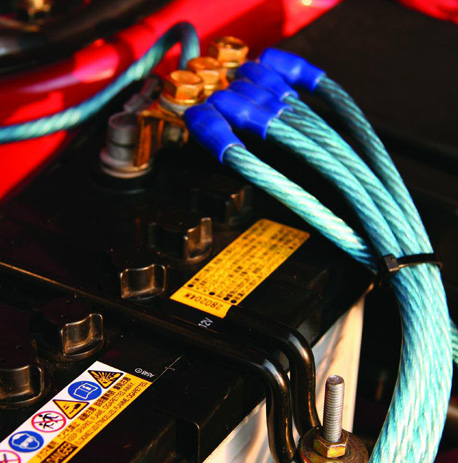 Car batteries are electrical energy.
Car batteries are electrical energy.
Heat Energy
Heat energy is the movement of energy from one object to another. It is also called thermal energy. It can move in three ways: through conduction, convection, or radiation.
Conduction occurs when heat moves directly from one object to another. What happens when you leave your car parked in a sunny parking lot on a hot day? The heat of the sun passes directly through the metal of the car and heats the air (and seats) on the inside.
 Hot vehicles in the summer are a form of heat energy.
Hot vehicles in the summer are a form of heat energy.
Convection is the movement of hot liquids or gases. For example, when you boil water, the liquid nearest the flame heats up first. As it gets hot, it rises, and the cooler water goes to the bottom where it gets heated. This continues until the water is boiled.
Radiation is the movement of energy in the form of waves. Turn the page for more information on radiant energy.
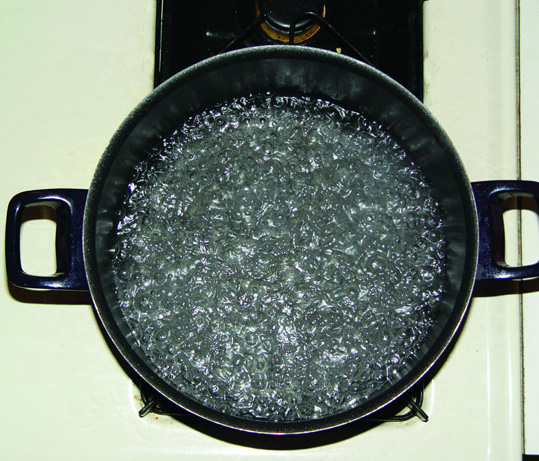 Boiling water is heat energy.
Boiling water is heat energy.
Radiant Energy
Radiant energy is the energy created through electromagnetic waves, such as light, heat, or radio waves. The sun is our major source of radiant energy because it gives off a great amount of heat and light. Scientists use the electromagnetic spectrum to discuss the types of radiant energy. The electromagnetic spectrum lists all the types of radiant energy by the length of their waves. The shorter the wave, the more energy and heat are created.

Most radiant energy can't be seen, but there is a small part of the electromagnetic spectrum that is called visible light. This is the light we can see. Differences in the length of the waves in this part of the spectrum cause us to see different colors.
Electrical Energy
A huge maze of wires in every house carries electrical energy to do many different jobs, from lighting your home to cooking food.
Electricity starts at the atomic level. Atoms are made up of a nucleus, protons, and electrons. We create electricity by forcing electrons to move from atom to atom. Electrical energy is the movement of electrons through a conductor. A conductor is a material that can carry electricity, like the wiring in homes.
Generators create the electricity used in our everyday lives, but other forms of electric energy occur naturally.
Lightning occurs when electrons are discharged from a cloud. Lightning is so powerful that if we could capture the electricity in a single bolt, it could power our entire home for days.
Static Electricity occurs when an object (or person) gets charged with electrons. You may have experienced this when scuffing your feet on a carpet and then touching a doorknob. The electrons you built up jump from your hand to the metal of the doorknob, causing a powerful shock!
 A man checking the electricity meter.
A man checking the electricity meter.
Chemical Energy
Chemicals contain stored, or potential, energy to hold their atoms together. When chemicals are mixed together, a reaction can occur. Chemical energy is the energy released through a chemical reaction.
We can use the heat that these reactions give off. We can use it to cook, to heat our homes, and to burn the gasoline that moves our cars.
One of the major uses of chemical energy is to help produce electrical energy. Coal, gas, and other fuels are burned to run electric generators.
The chemical energy in batteries is changed into the electrical energy we need to run everything from flashlights to toys.
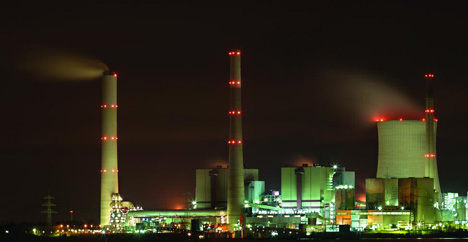 A coal plant.
A coal plant.
 Chemical energy batteries power this flashlight.
Chemical energy batteries power this flashlight.
Nuclear Energy
Atoms are so small that until recently even the most powerful microscopes could not see them. Yet when we split the nucleus of an atom, a tremendous amount of energy is released. Nuclear energy is the potential energy stored in the nucleus of an atom.
In a nuclear power plant, a reactor is used to split uranium atoms. This heat is used to turn water to steam. The steam powers a generator that creates electricity.
Nuclear power plants create about 20 percent of the electricity in the United States. Coal, oil, and natural gas help produce the rest.
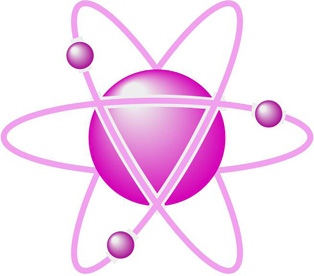 This is an atom.
This is an atom.
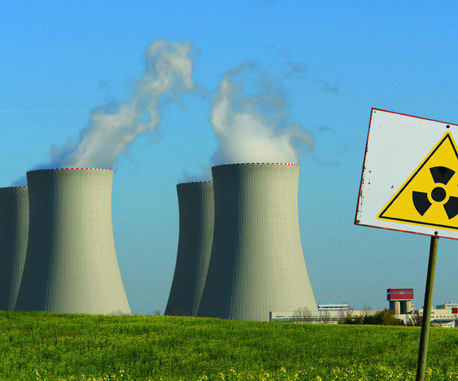 Cooling towers at a nuclear power plant.
Cooling towers at a nuclear power plant.
Additional topics
- CONSERVATION AND TRANSFORMATION OF ENERGY
- KINETIC VS. POTENTIAL ENERGY - Kinetic Energy, Potential Energy
- Other Free Encyclopedias